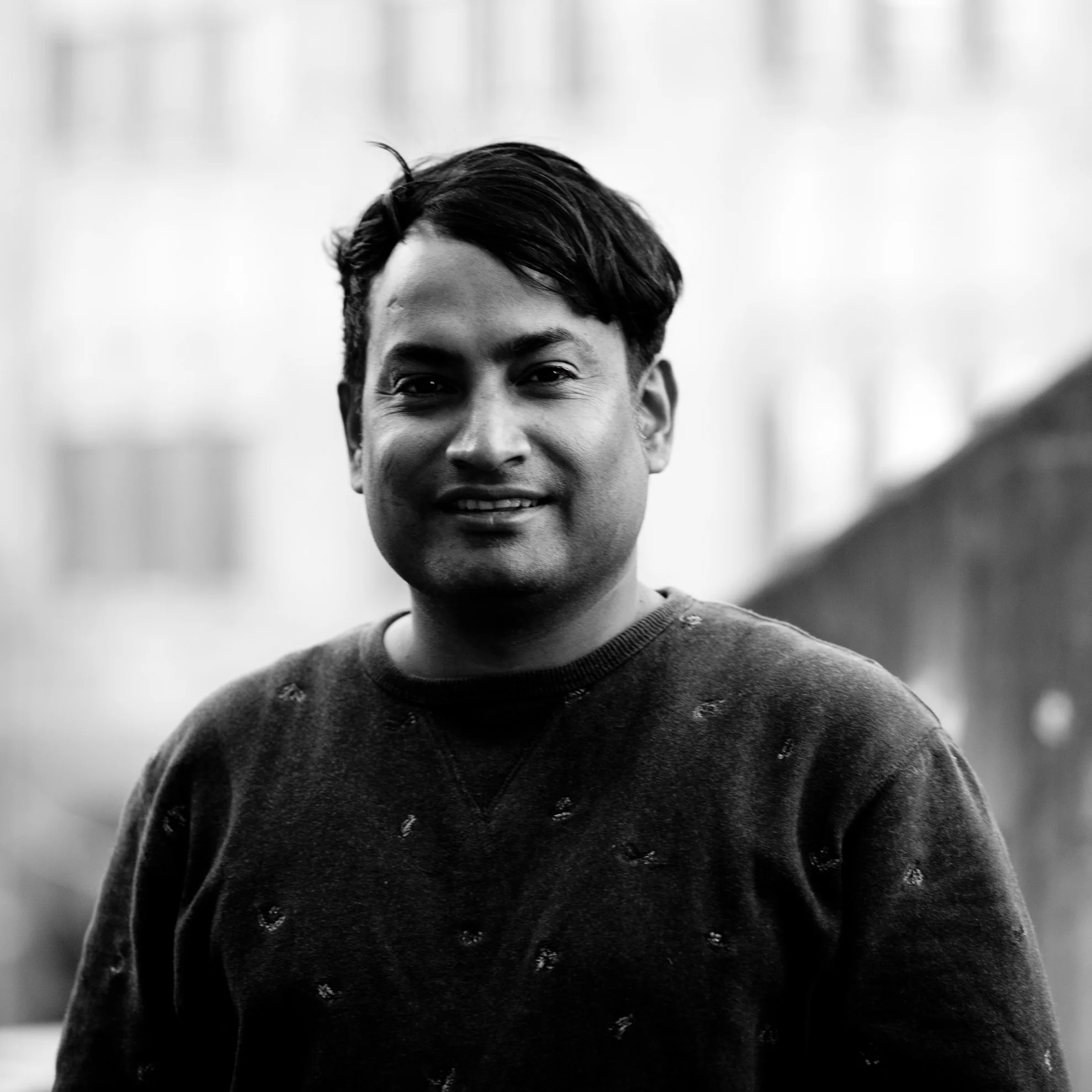Chandra Prakash Jha // Founder of COCCCON, Peace Silk Producer
Interview by Nastasia Beausejour
19/01/2017
“Creativity can care.”
What is your role in the company?
I’m social entrepreneur doing business by helping local communities. People who are working for me have better lives than others workers in India.
Where does the name Cocccon come from?
It started with a certain intention: We wanted to help people, our concept was “caring”, and at the same time be able to use the system for my creativity. At first the name of our project was: ”creativity can care” but when we had to make a label we realised “creativity can care” didn’t sound so good. As we use butterfly cocoons we’ve decided to combine “cocccoon” as label and keep “creativity can care” as a slogan.
Working with models from all over the world is another way to promote diversity?
We have Chinese, Arabic, Indian… models, for us it is important to promote unity and diversity. We want to bring all beauty together to show that the world can be a beautiful place.
You have started your career in the traditional fashion industry in India, now you are based in Germany doing sustainable clothing, what did you learn from this experience?
I did my graduation - fashion design - in India, then a master in Italy. I’ve worked with many Indian and European companies. Somehow I was more focused on the design process in my studio and I didn’t have access to know about the production. So while I was making sketches and drawings I never saw the process afterwards.
There was absolutely no connection between design and the production department, so I went to India with my previous company to see the factories the clothes I’ve designed were produced in.
When I saw the Indian’s working conditions I became very sad.
The process of making colours was particularly shocking! There wasn’t electricity like in Europe where the mixing of colours is done by machines. In India a man dives deep inside the water to blend the colour which is filled with chemicals. I’ve meet those people who work for the factory - they don’t live more than 40 years.
It was shocking for me, that I didn’t care before. I was doing my job as a designer and focusing purely on the aesthetic part of my up-coming collection. After this I tried to leave the fashion industry but I really don’t do anything but design.
I decided to stay in fashion design ethically and to stop following the mainstream.
In 2010, alternative fashion was not trendy, when I came to Germany saying I want to make ethical clothes people didn’t believed in me and joked around like I wanted to make hippie fashion.
I kept doing some research, working with organic material but it wasn’t enough for me. When I’ve travelled to my native place in India, I realized we have cocoons, but no industry using them.
I felt it was my purpose to go back and work with local people. In the next step I started to collect cocoons and when I got 100kg of them I asked myself “ What can I do with it?” We learned how to make silk out of cocoons, and I learned a lot about silk the process of making silk:.usually silkworms are killed during the production process. I wasn’t aware of this, “I don’t want to kill any animals”. It took us 4 or 5 months to experiment and find a way to make silk without killing the worm, in 2012 we were successful!
From here we founded “Cocccoon, creativity can care”.
We are making sure to do only organic peace-silk. We don’t use any chemical on the plants and we allow the silkworm to live. We started this project working with five village women and we’ve now reached more than 400 people who work with us.
Now some of the big fashion brands want to start collaborating with Cocccoon, so I see a bright future for organic fashion.
What is peace- silk exactly?
We make a small cut or hole in the cocoon and hang them in a room for one to five weeks, this way the silkworm can leave its nest once it has become a butterfly. In the beginning the cocoons broke but now we have a new machine which makes little holes in the cocoon and the worm can get out easily. This doesn’t exist in traditional fashion, so we have this extra process to let the adult silkworm live.
You are also using nets to protect plants from insects, can you explain this process?
We have two thousand mosquito nets, they work well and we take into account that some flies will come inside, we consider that it’s okay because it’s the circle of life.
We also use natural spray with a bitter taste instead of killing them with pesticides.
How do you see the fashion industry in the next years?
We only have one planet and we have to save it! We have to think about our children in the next generation. We need to care now. Big fashion companies shouldn't feel forced by the government to be sustainable. It should be a core issue and regular norm.









Feel The Ground is a short docu-fiction film in the first person. It is in Wolof, English and German. It portrays different cultural views on sustainable fashion consumption and the social issues around it. It tells the journey of a Senegalese woman living in Berlin where she studies Film. While working on one of her university assignments, she decides to create a documentary on Sustainable Fashion which led to her dreaming about the times she used to be bullied for wearing second-hand clothing. Through her voyage, she's giving her thoughts on the matter and interviewing people to find new perspectives. Towards the end, she confronts the bully.